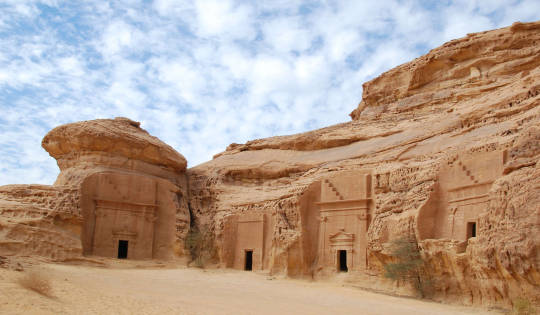#arabia
Explore tagged Tumblr posts
Text









Arabic Language
"حُرّيتي أن أكون كما لا يريدون لي أن أكون."
“My freedom is to be what they don’t want me to be.”
– Mahmoud Darwish (1941-2008)
#arabic#arab#arabic language#arabic literature#arabic langblr#arabic learning#polyglot#foreign languages#langblr#language learning#baghdad#petra#palestine#free palestine#jordan#iraq#calligraphy#arabic calligraphy#poc dark academia#arabic quotes#palestinian poetry#middle east#arabia#bookish aesthetic
202 notes
·
View notes
Text

The Visit of the Queen of Sheba to King Solomon by Edward John Poynter
#edward john poynter#edward poynter#art#queen sheba#king solomon#solomon#biblical art#bible#architecture#temple#solomon's temple#israelites#israelite#jewish#history#jerusalem#israel#christianity#christian#old testament#asia#hebrew#judaism#arabia#arabian#columns#monkeys#birds#lions#monkey
251 notes
·
View notes
Text

A woman at the Janadriyah Cultural Festival in Saudi Arabia
257 notes
·
View notes
Text

Funeral stele (fragment). Saudi Arabia, 12th to 13th Century CE.
The Louvre.
#the louvre#saudi arabia#Arabia#Arabian history#art#culture#sculpture#history#medieval history#medieval#middle eastern history#Middle Ages#museum#stone
78 notes
·
View notes
Photo

~ Arabic Coffee ~
54 notes
·
View notes
Text

Street scene in Al Khobar, Saudi Arabia
Saudi vintage postcard
#postcard#ansichtskarte#briefkaart#photography#saudi arabia#carte postale#vintage#postkarte#photo#historic#postkaart#khobar#ephemera#sepia#scene#street#saudi#arabia#al khobar#tarjeta#postal
26 notes
·
View notes
Text
هي من روحِ الشعب خمرٌ
هي من عرقِهِ خبزٌ و ياسمين
فكيف صار طعمها طعم نارٍ و دخان؟
she (beirut) is a wine made of people's spirit from people's sweat she's bread and jasmine so how did her taste turn into the taste of fire and smoke?
— fairuz, le beirut
29 notes
·
View notes
Text

Votive stele with Sabaean inscription adressed to the moon-god Almaqah, mentioning five South Arabian gods, two reigning sovereigns and two governors; alabaster, ca. 700 BCE, Yemen.
108 notes
·
View notes
Video
#oman#mountains#Arabia#arabien#arabic#jebel#shams.#FujiX-T2#Landschaft#Natur#Landscape#nature#canyon#Sunset#Sonnenuntergang#flickr
28 notes
·
View notes
Photo

Desert Kites
Desert Kites are mega-constructions that consist of two long walls converging upon an enclosed space that has on its periphery small stone constructions called cells. Seen from the sky, their shape suggests that of a windborne kite; they were thus called kites by pilots who flew over the arid regions of the Near East in the time of the French and British mandates of the first half of the 20th century CE. These kites combine various characteristics which in archaeology have been the object of particular research. However, most classical methods of investigation are useless because of the nature of these constructions.
In spite of many studies, kites remain a mystery in many respects, although recent research has advanced their knowledge. We are beginning to better understand their geographic extension, their age and their function, crucial questions still under discussion a short time ago. From the beginning of the 2010s CE, the access to high-resolution satellite images stimulated research by revealing that there are many more kites than were thought a few years ago. From this new data source and more classical information, multidisciplinary investigations were launched in conjunction with the organization of field expeditions.
Morphological Description
Kites are large archaeological remains, generally quite well preserved. They are dry stone constructions, composed of an enclosure and more or less continuous walls which converge towards an entrance; these walls can sometimes be absent but are usually two in number and sometimes three, four or more. Their length is commonly several hundred meters and can even reach several kilometres, while their height is no more than a few decimetres. The enclosures are variable in shape (circular, triangular, star-shaped, etc.) and their size, far larger than pastoral enclosures, varies from a few hundred square meters to more than ten hectares.
The small stone constructions or cells that are joined to the external part of the enclosure are the most sophisticated part of the device, always carefully constructed. Their number varies from a single cell to several dozen. The variability among the kites makes it difficult to propose a typology. Several often-observed attributes are considered, such as a disposition of the cells near the entrance, the existence of cells at the extremity of pointed appendices and the particular shapes of the entrance. These features are most often shared by kites from the same region, thus forming homogeneous groups circumscribed at the regional scale. Kites are found in arid environments, steppes and desert margins and their topographical location is clearly the result of a definite choice. A break in the slope is the most often observed at the position of the entrance and various topographic configurations were preferred to flat topography.
Continue reading...
32 notes
·
View notes
Text
Ali Baba Bunny Director: Chuck Jones Studio: Warner Bros. | USA, 1957
#Bugs Bunny#Daffy Duck#Mel Blanc#Looney Tunes#Chuck Jones#Warner Bros#Arabia#Genie#Treasure#Animation#Cartoon
121 notes
·
View notes
Text

Incense burner
Arabia, ca. mid-1st millennium BCE
106 notes
·
View notes
Text


Bollywood actress Rekha for Vogue Arabia.
#twitter#aesthetic#photography#pinterest#tweets#fashion#rekha#bollywood#india#indian#vogue#arabia#arabian#actress#urban#beautiful#women#july#august#2023#arab#cover#covers#accessories#classic#costumes#makeup
306 notes
·
View notes
Text

Head ornament. Saudi Arabia. “Found” in 1975.
Very pretty. ❤️
The British Museum.
#the british museum#Arabia#saudi arabia#Arabian history#Saudi Arabian history#Saudi history#history#middle eastern history#art#culture#traditional clothing#headdress#style#modern history#museum#pretty
62 notes
·
View notes
Text



Mada'in Saleh, Al Ula, Saudi Arabia.
This is where the surah of Al-Hijr from the Qur'an was said to have taken place.
344 notes
·
View notes
